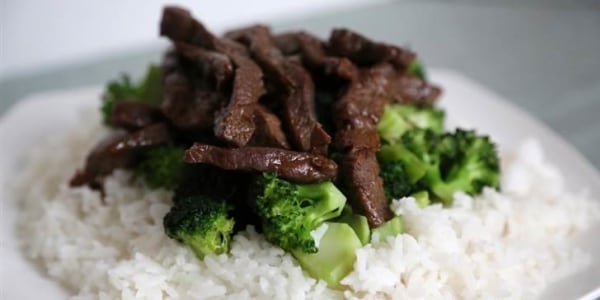Many home cooks hear warnings about Teflon and wonder if nonstick pans are truly safe to use. The reality is that they are the go-to pan of choice for many because, let's face it, who wants their delicious home-cooked meal stuck to the bottom of a pan?
TODAY Food asked culinary experts to weigh in on the truth about nonstick cookware, how best to use it and how to maintain it.
So what is nonstick cookware, exactly? According to Lisa McManus, executive testing and tasting editor for America’s Test Kitchen, a nonstick pan is typically made of aluminum and then is either coated with polytetrafloroethylene, or PTFE (Teflon is a name brand of this coating) or has ceramic applied to the pan with no PTFE.
Are these pans safe to use?
While there used to be concern over the possibility of ingesting Teflon coating if it flaked off of the pan, McManus told TODAY that now, manufacturers have become very good at carefully bonding the Teflon to the pan so it does not come off. Even if someone were to eat a flake, however, it would not be harmful.
The problem comes when Teflon is heated above 600 degrees, at which point it releases fumes that are potentially dangerous. “It’s unlikely to get to 600 degrees in regular cooking,” she explained, noting that as a safety measure, cooks can add some oil to their pan, which will smoke at 400 degrees, before preheating. The smoke would be an early indicator that a pan is getting too hot.
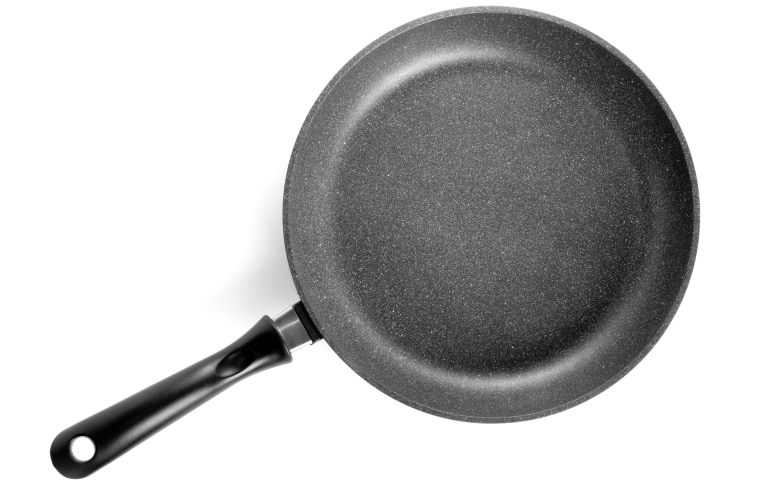
She also advised never to set a pan on high and leave it unattended, noting that unattended cooking is the No. 1 cause of house fires in the U.S.
If a person does inhale fumes from nonstick cookware, the American Cancer Society says that the only risk is experiencing flu-like symptoms, but there are no other known risks to humans.
Shelly Velez, executive chef at Pillbox Tavern and Nautilus Tavern told TODAY Food that she always uses a wooden spoon or plastic to avoid scratching the Teflon, just to be extra careful. Using a harder spatula or any type of metal will increase the likelihood of scratches or scrapes.
Alternatives to Teflon pans
While ceramic pans don't have the same reported safety issues that come with PTFE use, McManus said when testing pans at America’s Test Kitchen, they found that those coatings didn’t hold up as well as the Teflon pans. “You want something that’s going to last longer than a few weeks,” she said.
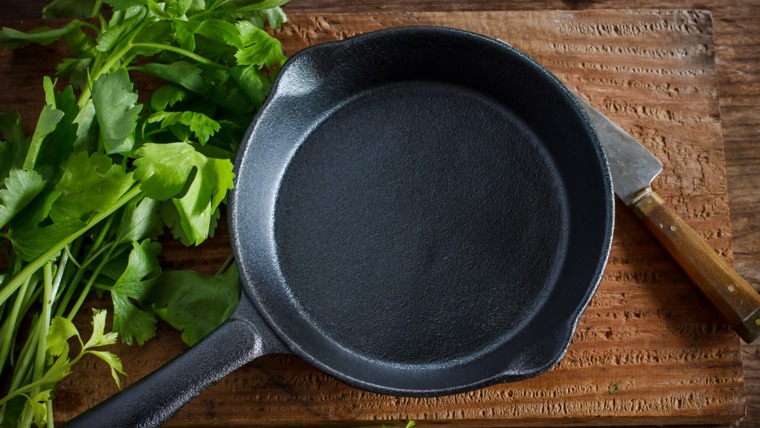
For other alternatives to PTFE-coated pans, McManus said cooks can use cast iron or carbon steel pans. “As you use them, you will build up the seasoning that bonds to the metal and becomes a natural nonstick coating,” she explained, though she said that they will never be as nonstick as Teflon.
Check out our review of the Lodge cast iron pan if you're looking for an inexpensive option.
From eggs to fish: Best uses for nonstick cookware
While nonstick pans may be handy, they aren’t right for all types of cooking. There are several foods and dishes for which they are ideal, especially those that are delicate and more prone to breaking when placing a spatula underneath.
“They are a savior in the chef world when it comes to egg cookery. None of us would get through our madhouse brunch services without them!” Christina Pancheri, executive chef of California eateries Miss B’s Coconut Club and Park 101, told TODAY Food. Velez, however, said she prefers to cook with stainless steel pans when cooking eggs, because they work well and are easy to clean.
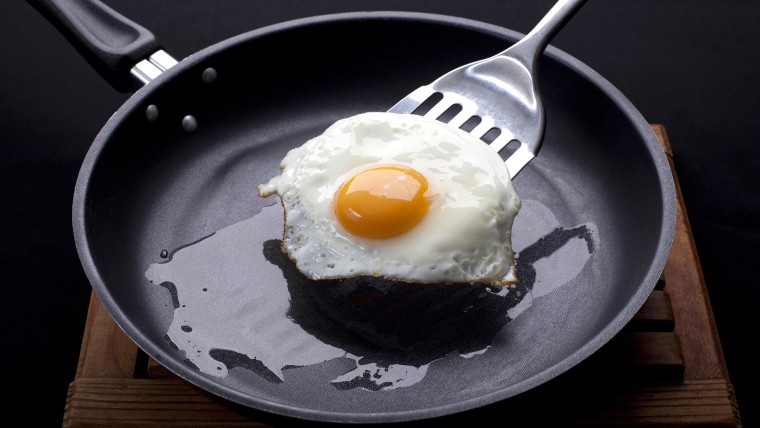
Andy Weiss, executive chef of The Smoking Gun in San Diego, says he loves to use nonstick pans for cooking fish, especially skin-on fish, and advises to use little, if any, oil when cooking with the pans.
McManus added that they are also great for stir frys to keep the “fond,” or brown bits of residue from cooking meats and vegetables, from sticking to the pan and burning. When using a nonstick pan, the fond will stick to the food and not the pan.
Care and maintenance
To keep a nonstick pan in good working condition as long as possible, McManus said to avoid using Pam cooking spray, which can gum up the surface and add unnecessary flavor. McManus also told TODAY Food that nonstick pans should never go in the dishwasher. “Even the best coating is going wear off over time gradually, but this just accelerates the wear and tear,” she said.
Pancheri said that in her kitchens, the pans are all hand-washed and placed with towels stacked between them.
Inevitably, these pans won't last forever, so as soon as you start to notice any flaking, it's best to throw that pan away and invest in a new one.
Types of pans
When it comes to the type of nonstick pan home cooks should choose, McManus explained that the coating will only last on most pans for about a year to a year and a half, so it’s not advisable to spend lots of money on a nonstick pan that won't last generations. However, she said there are plenty of good-quality options that don't cost a fortune.
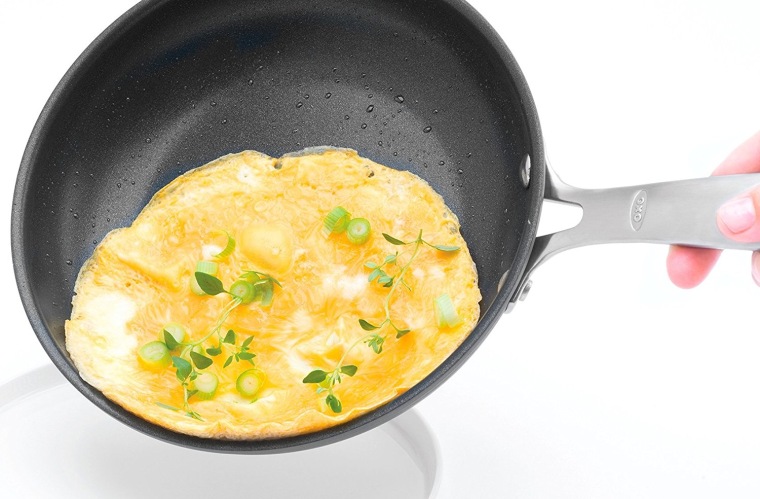
She suggested keeping it under $100 and recommended the OXO 12-inch open frying pan. While all nonstick pans start out slippery, lower quality pans will not be as durable, she said. Look for a pan that has at least 9 inches of cooking surface (which is often advertised as a 12-inch pan, she said) so you can cook several steaks or chicken breasts evenly without them touching the sides.
Other features to consider include finding a solid handle that provides a good grip, and avoiding anything too soft or squishy that could cause you to drop the pan.
To give the pan a bit more life, McManus said to try warming it, empty, over heat for about 30 seconds and then remove, rub with 1 tablespoon of vegetable oil, wipe it with a paper towel and then you're ready to get cooking.
